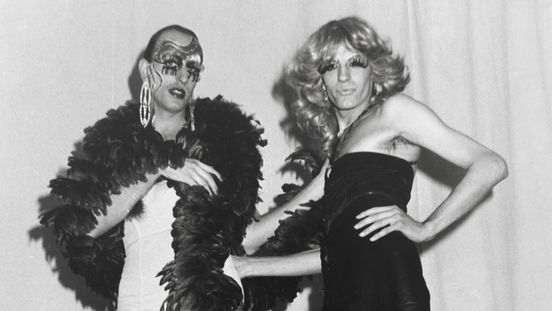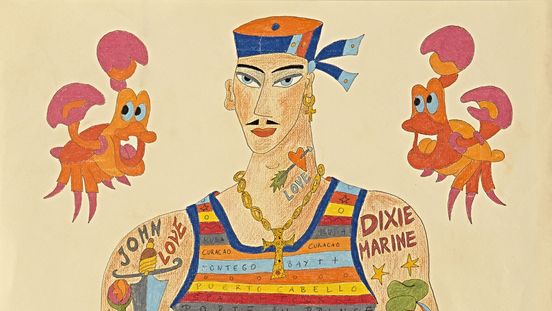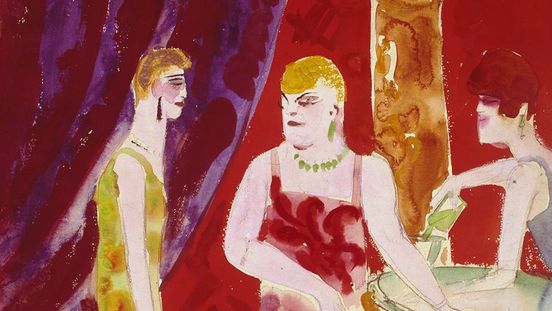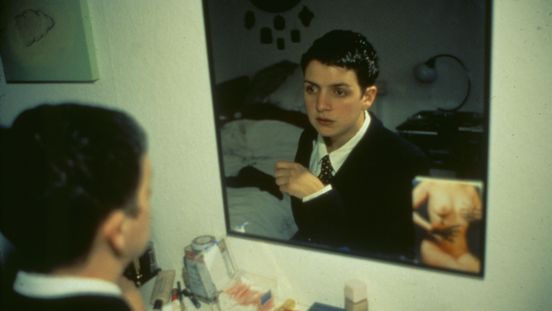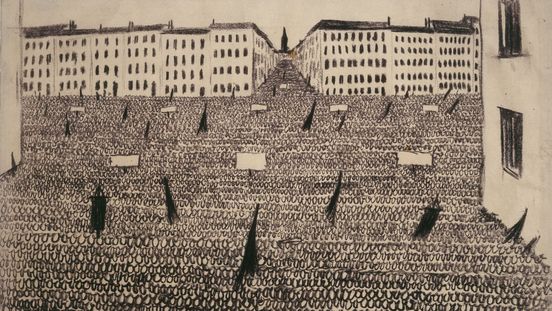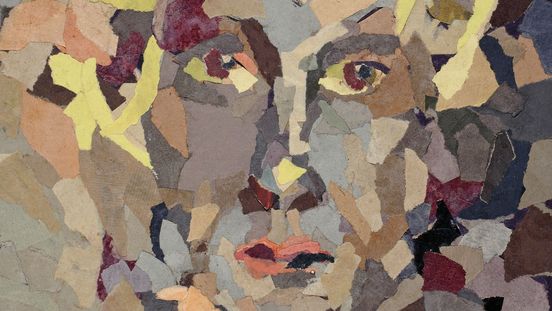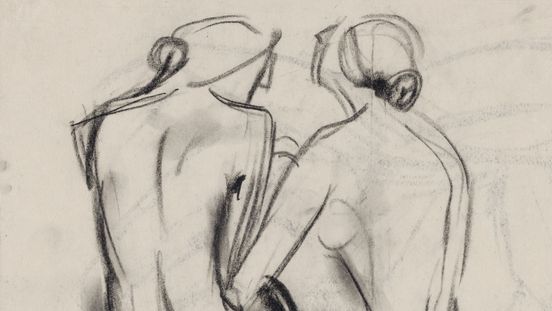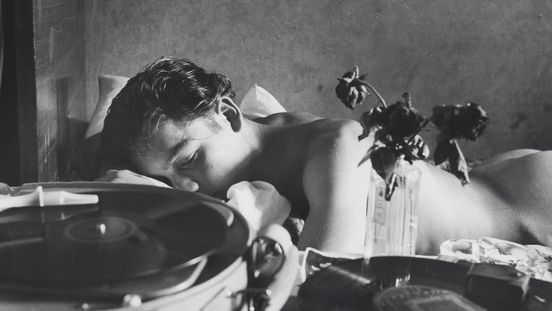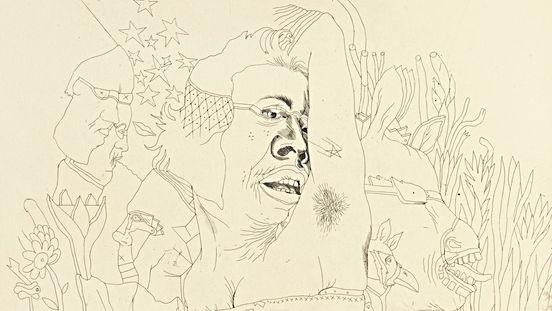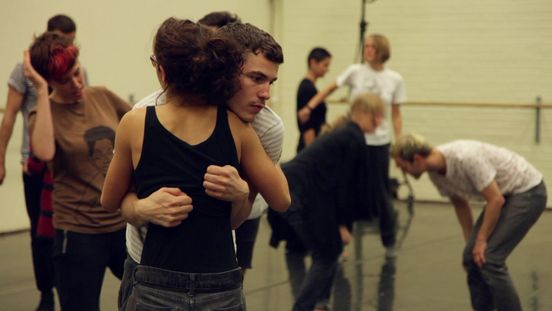Using crude, expressive brush-strokes, Rainer Fetting (* 1949) depicts himself in a nearly life-sized portrait. The title says it all: the artist is styling himself, in a confident pose, as Gustaf Gründgens (1899–1963). This controversial actor-director was celebrated on the German stage during the Nazi regime despite his homosexuality, which was public knowledge. In the painting, the monocle is the only reference to the historical figure – the haircut and clothing are typical of the 1970s. Fetting had a strong interest in theater and film and a specific fascination for this glamorous figure, with whom he grappled – partly due to his own homosexuality. "Self as Gustaf Gründgens" takes overt liberties with semantic and aesthetic points of reference, an approach that would continue to characterise Fetting’s later work. Self-portraits in which the artist adopts other roles would also remain a recurring theme.
This painting was made in the same year Fetting met the artist Salomé (* 1954); the two moved in together in 1975. While studying at Berlin’s University of the Arts, they both become active in the gay and lesbian liberation movement, which began its activism in the early 1970s. The desire for social change and public acceptance of their homosexuality was also reflected in both artists’ work. Fetting’s work on paper, "Figure at the Wall" (1987), for example, presents a homosexual eroticism combining a muscular body with a suggestively made-up face. As they dealt with identity and sexuality in their art, Salomé and Fetting made important contributions to the queer discourses of the period. In 1977, together with other artists, they co-founded the Galerie am Moritzplatz, which became the primary platform for their artistic positions. In their painting and performance art, they sought to bring greater visibility to contemporary subcultural themes.
